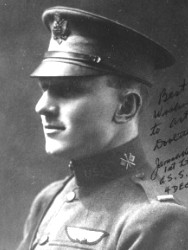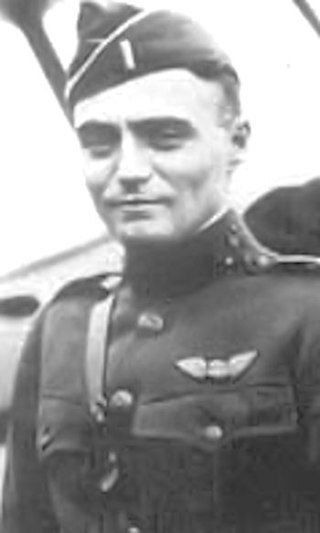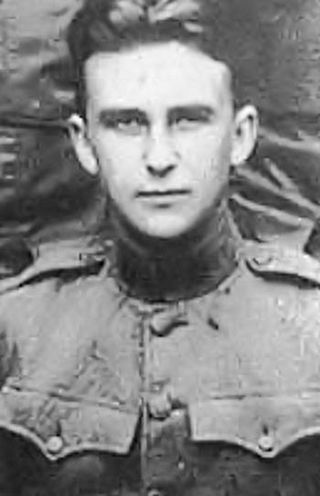
The 95th Aero Squadron was an Air Service, United States Army unit that fought on the Western Front during World War I. It was the first American pursuit (fighter) squadron to fly in combat on the Western Front, beginning on 8 March 1918.

The 27th Aero Squadron was a United States Army Air Service unit that fought on the Western Front during World War I.

George Augustus Vaughn Jr. was an American fighter ace in World War I and Distinguished Service Cross, Britain's Distinguished Flying Cross, and Silver Star recipient. Vaughn was America's second-ranking Air Service ace to survive the war.

Lieutenant Lawrence Kingsley Callahan was a World War I flying ace credited with five victories.

Lieutenant Orville Alfred Ralston was a World War I flying ace credited with five aerial victories. He returned to service for World War II, only to die in a B-17 crash.

The 49th Aero Squadron was a United States Army Air Service unit that fought on the Western Front during World War I.

Lieutenant James Alfred Keating was an American World War I flying ace credited with six aerial victories, including four triumphs during a running battle on 9 August 1918.

Howard Clayton Knotts was a prominent American aviation lawyer who served in World War I as a flying ace credited with six aerial victories.

Lieutenant Jesse Orin Creech was a World War I flying ace credited with seven aerial victories. He shot down the final victory of the war for his squadron.

Captain John Owen Donaldson was a World War I flying ace credited with seven aerial victories.

First Lieutenant Lloyd Andrews Hamilton was a World War I flying ace credited with ten aerial victories. During five months of 1918 he became an ace with the Royal Air Force (RAF) and then again with the United States Air Service (USAS). Hamilton Air Force Base is named after him.

The 17th Aero Squadron was a United States Army Air Service unit that fought on the Western Front during World War I.

The 147th Aero Squadron was a United States Army Air Service unit that fought on the Western Front during World War I.

Colonel Reed Gresham Landis was an American military aviator who served in the air services of the United States Army during World War I and World War II, and was credited as a flying ace during the former, with twelve aerial victories.
Captain Reginald Carey Brenton Brading was a British World War I flying ace credited with thirteen confirmed aerial victories.
Captain John Ellis Langford Hunter was a British World War I flying ace credited with 13 confirmed aerial victories.

Lieutenant Howard Burdick DSC DFC was an American World War I flying ace credited with eight confirmed aerial victories. He and his son, Clinton D. Burdick, are the only known pair of father-son flying aces.

Lieutenant Chester Ellis Wright was an American World War I flying ace credited with nine confirmed aerial victories. He was the top scoring ace for his squadron.

The 22nd Aero Squadron was a United States Army Air Service unit that fought on the Western Front during World War I.
Roby Lewis Manuel, with Bar, was an Australian flying ace of the First World War credited with 12 official aerial victories. He led the Anzac Day flyby in London in 1919. When World War II erupted, Manuel joined the Royal Australian Air Force and once again served his nation.

















